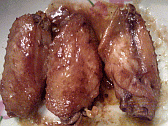|
|
| Chinese
Recipes |
Chinese Noodles
- Mein or Fun |
|
In China noodles can be
made from any flour, something that also applies to
some Chinese made pasta! Like pasta in the West, there
are many types of noodles commonly available both in
restaurants and for home cooking.
Mein
or Fun?
98% of all Chinese noodles are made using either wheat
flour or rice flour - the split being about 50-50.
1. 麵 Wheat noodles always have
a slight yellow appearance and are called 'min'
and pronounced 'mein'. The Mandarin character
is simplified to 面
2. 粉 Rice
noodles always look white (Sometimes opaque white)
and will have the Cantonese word 'fun' somewhere
in their title.
Nb. Cantonese
for rice 米 is 'fan' pronounced 'faan', whilst
rice for noodles is 'fan' pronounced 'fun'. Students
of Cantonese will know this is no coincidence. |
 |
There are four other main forms of noodle that are common,
although there remain several hundred other versions
and specialty dishes from all over Southeast Asia.
3. 拉麵 Hand made noodles are called
'laap mein' and are made from wheat flour. Typically
these are found only in Xi'an style restaurants, a few
Hong Kong restaurants; or as sold in backstreet restaurants
by Chinese muslims who wear small white hats and originate
from Qinghai or Xinjiang Provinces.
4.
沙河粉 'sha hor fun', a flat rice noodle that is quite
thin and broad. These are usually served hot if white,
or cold and with chilli if opaque.
5.
麵絲 Vermicelli noodles are called 'cellophane
noodles' or 'fun see'. They are usually opaque or see-through.
These are often used in soups, or at more refined social
events. I find them particularly tasteless, often congealed
into a large lump, slippery to eat, and not worth the
hassle. There is a white version that is often crispy
and served as a base for presenting other dishes - where
it is not expected to be eaten.
5b.
Do not confuse the above with 'thin white noodles' when
ordering. These are known as 'mai fun' 米粉, which is
a general term for any small round and white rice noodle.
6. 杯仔麵 or Cup Noodles are also
known as 'pot noodles', 'snack pots', or instant noodles.
In the West they come in plastic tubs that may or may
not have sachets inside. You add boiling water and wait
for 5 minutes before eating.
In China these are sold in most corner shops, and come
in two types:
6a. Flat-pack
where you tip the contents into a saucepan and boil
for a couple of minutes, then eat, These are simple,
very cheap, and echo Cantonese cuisine. Hungry boys
may want to have two of these, and add something like
Bisto to make a thicker gravy?
6b.
Snack-pots that hold about 1 pint of water. These are
normally in waterproof cardboard pots that have 3 sachets
inside, each of which you add to the meal. Some contain
fresh ingredients, such as dastardly hot pickled chilli's;
but normally there are: chicken bouillon mix, dehydrated
vegetables, and a fiery chilli sauce. Tip all into the
pot, add water and wait 10 minutes, then eat. Stir occasionally
if you want to. Quick and Easy.

|

|
 |
| Spicy Beef flavour = quite hot |
Hot and sour Beef + real chilli's |
Chicken stock and Mushroom |
|
I have found the brand above to
be very consistent, and it has improved over time.
Inside are the sachets and a fork to eat with.
The cost is small averaging Y4 or 40 pence UK
per pot. These use the yellow wheat noodles and
are delicious in their own way. I often add things
like Bisto, garlic, Bouillon etc.
Other brands can be equally as good, or awful
depending upon which ones you try. I do not like
the versions using rice noodles, which are invariably
of vermicelli type. |
6c. Unfortunately China is never
so simple, so whilst the above 杯仔麵 literally means:
'cup noodle' or 'boi zhi mien', there are other terms
frequently in use. 公仔麵 'gung zhi mien' and 快熟麵 'Faai
suk mien' could both be equally correct, but can also
mean other related dishes as well.
China and geographically close neighbour's all use noodles
as a major or minor part of their daily diet.
粉麵 If you just want to obtain noodles in general - like
finding them in a supermarket, the general words are
'fun mein' = rice / wheat noodles. This can also be
useful in restaurants, where plain boiled rice (which
has a tendency to be quite dry) is usually served as
default. |
|
|
This information is as supplied by ourselves, and ably
supported by our friends and various internet portals. |
|
| Search
this Website |
|
|
| Descriptions |





|
| Chinese Recipes |




|
|